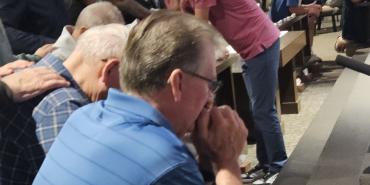A Bigger Vision of Revival

When churches speak of “revival,” the model most often referred to is the account of Pentecost in Acts 2, and there are good reasons for this. The disciples obeyed Jesus, they gathered together in harmony as He commanded (“with one accord in one place” [Acts 2:1 KJV]), and they waited obediently for the outpouring of the Holy Spirit. God kept His promise and allowed the first “infant” steps of the Church to reflect God’s miraculous, barrier-breaking love and power.
The resurrection of Jesus demonstrated that not even death can stop God’s purpose and mission.
Pentecost demonstrated that other barriers seeming to impede God’s mission are just as easily removed. In Acts 2, the Gospel was preached and heard clearly outside of the native language of the disciples. God’s intention is to have a global Church where men, women, teens, and children can live out the good news regardless of ethnicity or geography (see Matt. 28:18-20 and Acts 1:8).
There is a second aspect to revival, found in Acts 4. Here we begin to see the long-lasting impact of the initial revival experienced in Acts 2. We see ecstatic moments of supernatural communication and healing, the deepening of the community of faith (the Church), and thus the Church’s broadening impact on those around them. In other words, the disciples did not leave the Pentecost experience with simply a good feeling and a story to tell their children. They also left with a clear vision of a Church that would impact the poor, the widows, the oppressed, and the hungry.
The spiritual transformation and experience of Pentecost were not the full content of revival. Instead, they were a precursor to the larger revival that involved Christians, empowered by the Spirit, putting their faith into action as a witness to the love of Jesus Christ. The results of this lived out love, according to Acts 4:32-35, included sharing their wealth and possessions with those in need. What they did on behalf of those in need was both a reflection of and an ongoing product of what they experienced.
There was no separation between a spiritual transformation and helping the needy in the early Church. These were married together, just as they were in the ministry of Jesus Himself! This is the fullness of revival as Acts describes it.
Can we pray together for real revival? Revival implies the breathing of new life into God’s people. The purpose of this revitalization is sharing the love of Christ with each other and those in need through our lives. This Christian love is expressed in a variety of ways, ranging from sharing words of hope to sharing a meal. Revive us, O Lord!
Prayer for the Week:
“God, give me a deep humility, a well-guided zeal, a burning love, and a single eye, and then let men or devils do their worst!" (George Whitefield)
Charles W. Christian is managing editor of Holiness Today.
Written for devotions with Holiness Today
Please note: All facts, figures, and titles were accurate to the best of our knowledge at the time of original publication but may have since changed.




